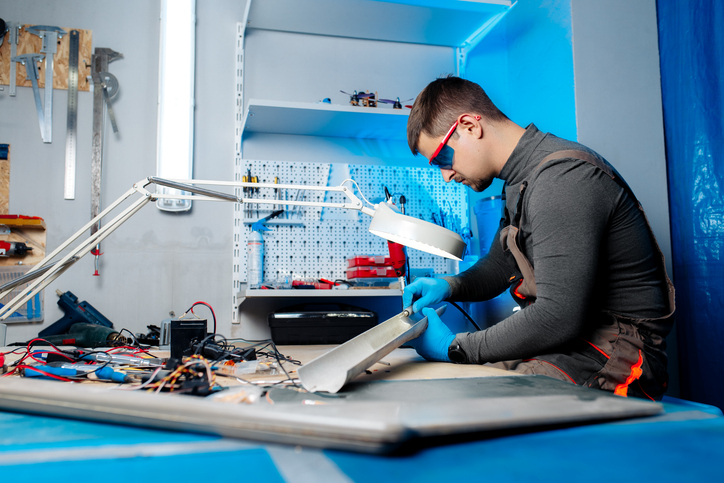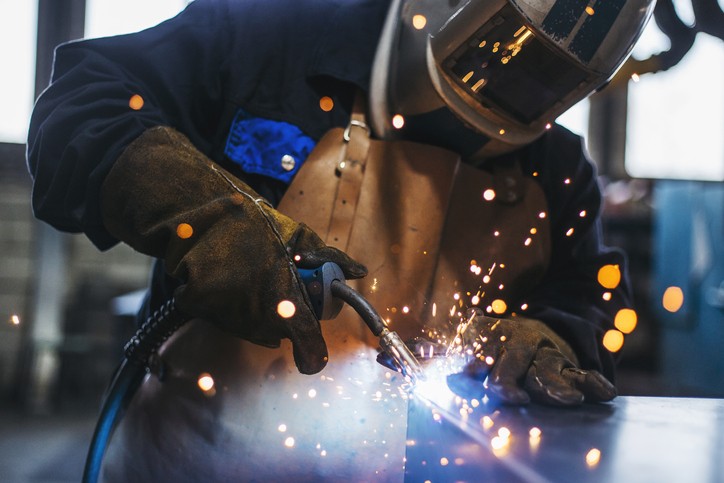Metallic materials, pivotal to technological progress over millennia, are now in high demand in sectors like construction, transport, and energy. However, their extraction and manufacturing processes, notorious for their greenhouse gas emissions, are a pressing concern. As cities expand and infrastructural projects multiply, the need to enhance the sustainability of these metals becomes urgent. This is not just a necessary step to reduce carbon dioxide production and improve energy efficiency, but a call to action for all of us to protect our environment.
Defining Sustainable Metals
Sustainable metals are essentially the results of metal production without using fossil fuels. Today, steel production accounts for 8% of the environment’s greenhouse gas emissions. Most of this pollution occurs during the conversion of iron ore into molten iron using coal.
One solution that can help reduce the metal manufacturing industry’s carbon footprint is green hydrogen. When burning, hydrogen emits water as a by-product. If the hydrogen used is produced through electrolysis using renewable electricity and water, it becomes free from carbon dioxide emissions.
The Role of Sustainable Metals in Industry
Metals and minerals are pivotal in running the global economy. They provide the raw materials needed for daily use and industrial processes. The world is transitioning towards clean energy, and sustainable metals largely influence countries’ abilities to achieve their sustainable development goals. Sustainable metal production can address resource efficiency and security, satisfying the continuous demand for structural and economic developments in developing countries.
Metals like aluminum are critical to a modernized electrical grid, energy-efficient buildings, electric vehicles, and more. An advantage of aluminum is that it can be recycled without losing its quality, compared to basic materials like plastic and steel. Of all the aluminum ever produced, about 75% is still in use today.
Clean energy technologies often rely on specific key metals, and their sustainability is crucial in supporting such production processes. The main metals used in various industries are cobalt and lithium.
Cobalt is mainly produced as a nickel and copper mining by-product. It is an important material in the cathode of lithium-ion batteries. Lithium is also crucial in making batteries used in smartphones, electric vehicles, and other production industries. Most car companies like Ford, BMW, and Tesla prefer the lithium-ion battery and use it in the production of their vehicles.
Copper is used as a wind power conductor, for general wiring, and in the manufacture of coins. Because of this functionality, sustainable metals are crucial in supporting the economy by supplying electricity to industries. Additionally, coins act as a representation of value, facilitating various trades in the industry.
Environmental Benefits of Using Sustainable Metals
Shifting to sustainable metals like recycled steel provides numerous environmental advantages. These include the following.
Energy Savings
Metal production processes, like steel, consume high energy from burning fossil fuels. By recycling steel, the only step involved is remelting scrap steel in an electric arc furnace, thus reducing the demand for coal and oil. The resultant energy conservation helps reduce global warming.
Natural Resource Conservation
Most metal production processes consume many natural resources. Coke, iron ore, limestone, and alloying elements like manganese, tungsten, and molybdenum are non-renewables. They are used in steel production, and they can be conserved by using more sustainable processes.
Waste Reduction
About 40% of the world’s annual solid waste comes from construction and demolition. The landfills, due to construction wastes, release nitrogen, methane, hydrogen, and vapor, which can cause smog and climate change. Focusing on sustainable metal production techniques conserves metal products for reuse and reduces the amount of waste disposed in landfills.
Economic Impacts of Sustainable Metals
Sustainable metals reshape the economy by offering environmentally friendly production processes. Sustainable metals drive economic growth through the following.
Cost-Effectiveness
The production processes involved in producing sustainable metals are cost-effective eventually. While the initial investments in sustainable production technologies may be higher, the lifecycle costs are significantly lower compared to conventional mining and extraction methods.
Innovation
Sustainable metal production techniques focus on resource efficiency and waste reduction. As a result, various professionals have devised innovative solutions to maximize resource efficiency. These innovations drive technological advancements, fostering a culture of continuous improvement and boosting productivity.
Industrial Development
Investing in green technologies creates job opportunities for various production roles. Individuals can be tasked with research and development, supply chain jobs, or on-site manufacturing. By fulfilling their roles in the production of sustainable metals, they can drive the overall economic growth in their country.
Supply Chain Security
Sustainable metal production reduces dependency on finite resources by diversifying sourcing options. By incorporating recycling materials and other sustainable production techniques, companies can minimize supply chain disruptions and create a more stable procurement process. This reduces the vulnerability of production to market or resource fluctuations.
Challenges in Adopting Sustainable Metals
While adopting sustainable metal production processes offers significant benefits, a few challenges remain.
Technology Limitations
One innovation in the production of sustainable metals is hydrogen-based steel production. The challenge with this kind of production is that it becomes less efficient over time. Under the high heat produced by hydrogen reaction in the reactor, the nanoparticles in the ore assemble to form structures that clog reactors and reduce efficiency. Eventually, the reactor fails.
Contamination
Adopting sustainable methods like recycling can expose the metal to other metals or impurities. If steel mixes with copper during recycling, for example, the steel properties can be degraded.
Material Loss
Recycling techniques aren’t 100% efficient. With each recycling cycle, a significant amount of metal goes to waste. The metal can be wasted as dust, slag, or other forms.
Regulations
When accumulated, heavy metals can cause severe health hazards. Different regions have varying regulations regarding sustainable metal production processes. These restrictions on global companies can inhibit their strategies for producing sustainable metals.
Conclusion
Adopting the use of sustainable metals for construction and industrial development can benefit the environment and economy. If you’re an engineer or project manager or have any affiliation that requires the use of metals, NAMF offers great insights and solutions. Visit their website to find out more about their contribution to the metal manufacturing industry.



